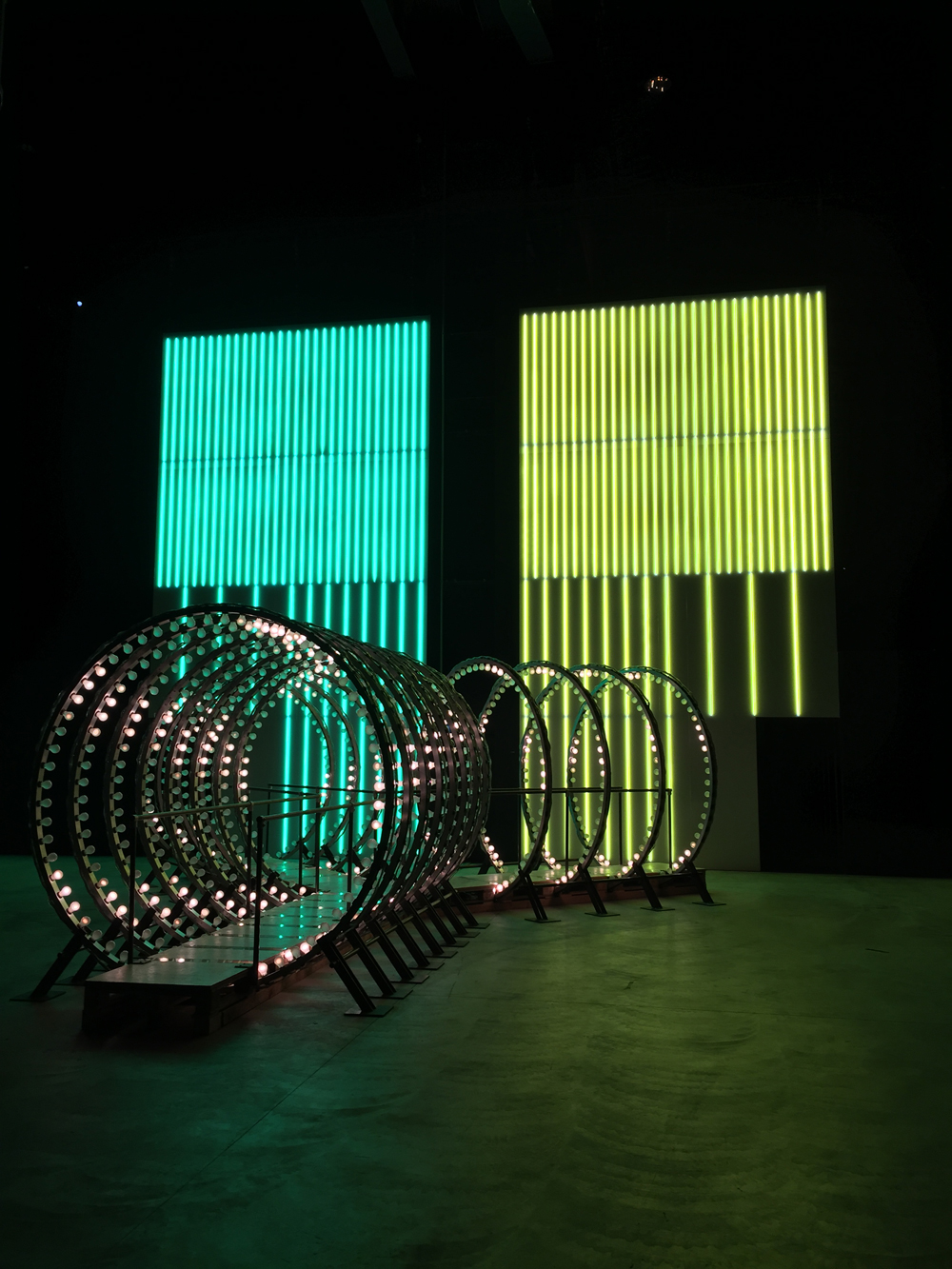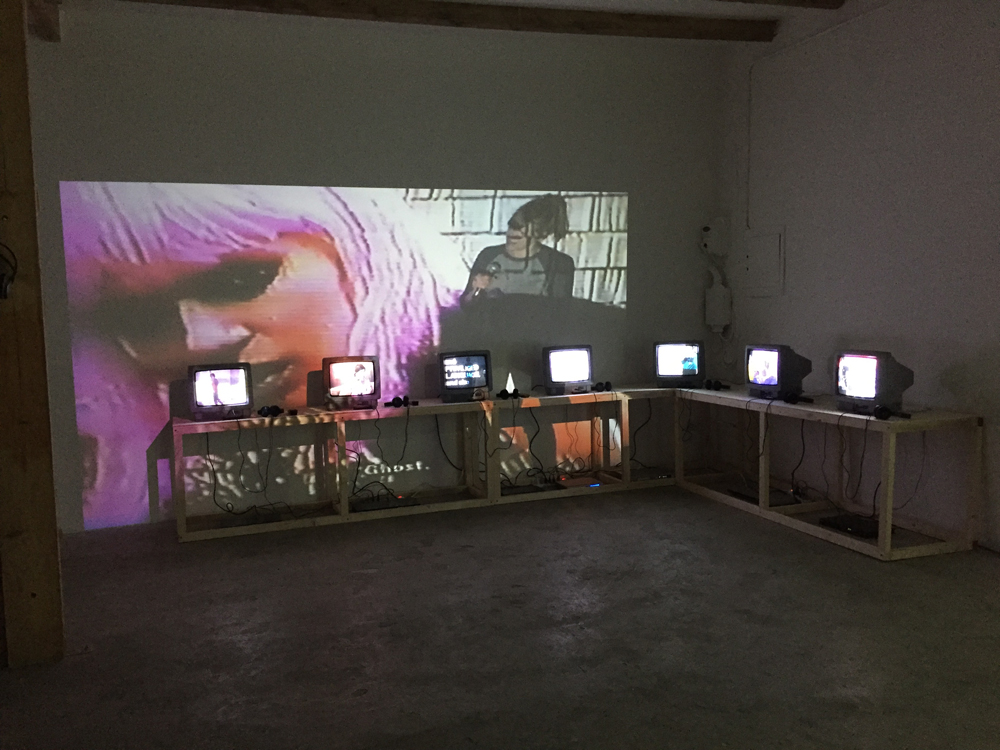Critic's Guide: Milan
A round-up of the best shows and events on in the city this week
A round-up of the best shows and events on in the city this week

Performances and Events

Sarah Lucas, 'INNAMEMORABILIAMUMBUM'
Albergo Diurno, Piazza Oberdan
8, 9, 10 April
With a dozen new sculptures, a concert and the screening of a group of films, Sarah Lucas takes over the finally reopened Albergo Diurno, a stunning and neglected underground public bath designed by Piero Portaluppi in the early 1920s. Curated by Vincenzo de Bellis and Massimiliano Gioni, the show is a joint venture between miart and Fondazione Trussardi. (Booking essential.)

'Stage as a social platform'
Teatro Continuo Burri, Parco Sempione
9 – 10 April
For two days (at 3pm and 4.30pm), a series of participatory performances by Jérôme Bel, Alexis Blake, Luigi Coppola and Christian Nyampeta will occupy the open-air stage of Teatro Continuo – a 1973 architectural project by artist Alberto Burri which was rebuilt last year in Milan’s central park. Curated by Simone Frangi, Tommaso Sacchi and Gabi Scardi.

'People in a building without the building'
ex Guarmet, via Col Moschin no. 8
8 – 9 April
Starting on Friday at 8pm, this former jewellery factory in the Navigli area will play host to a 24-hours programme of performances and interventions by around 30 artists (among others, Alterazioni Video, Giorgio Andreotta Calò, Lupo Borgonovo, Beatrice Catanzaro, Anna Franceschini, Marcos Lutyens, Jacopo Miliani and Davide Savorani). Bound to be fun, loud and crowded.
Exhibitions

Carsten Höller, 'Doubt'
Pirelli HangarBicocca
7 April – 31 July
Curated by Vicente Todolí, the cavernous spaces of HangarBicocca host more than 20 works, both old and new, installed along two twin paths. Visitors have the choice of which to follow, along Decision Corridors (2015). Expect flying mushrooms, optical hallucinations, and revolving carousels.

Goshka Macuga, To the Son of Man Who Ate The Scroll', and ‘L’Image Volée’
Fondazione Prada
4 February – 19 June; 18 March – 28 August
The new Fondazione Prada (which staged another memorable Höller solo, back in 2000), boasts two conceptually refined artist-curated exhibitions: Goshka Macuga’s ‘To the Son of Man Who Ate The Scroll’, scans our notion of history and future with the help of handsome androids and sketching robots, and Thomas Demand’s ‘L’Image Volée’ (with architecture design by Manfred Pernice) is a vast survey on artistic ‘appropriation’ and ‘stolen images’, from 1820 to today – via Sturtevant’s Duchamp Man Ray Portrait (1966) and Trevor Paglen’s photographs of undersea internet cables.

Studio Azzurro
Palazzo Reale
6 April – 4 September
Most visitors of Palazzo Reale will head to ‘Boccioni. Genius and Memory’, the expansive exhibition which celebrates the centennial of the death of this father of Futurism – a movement born in Paris, but undisputedly raised in Milan. At the same location, ‘Immagini Sensibili’ (Sensible Images) is the retrospective of Milan-based Studio Azzurro, one of the few Italian artist collectives to have operated consistently with video, cinema, new media, hi-tech and immersive installations – touch screens and liquid video walls – since its founding in 1982.

Luciano Fabro
Galleria Christian Stein
28 October 2015 – 10 April 2016
Luciano Fabro (1936–2007) was the only Arte Povera founder who lived in Milan, where he taught at Brera academy and animated the off-space Casa degli Artisti. For those who missed his retrospective at Reina Sofía last year, this exhibition (organized in collaboration with the Luciano e Carla Fabro Archive) is an excellent alternative. The gallery’s historical venue in the city centre hosts a reconstruction of Fabro’s first solo show at Galleria Vismara in 1965, featuring minimal mirror sculptures, while the ex-storage space in Pero, near the Expo site, presents a selection of monumental works, including Fabro’s famous series of overturned Italie (‘Italys’) and Piedi (Feet).

L’Inarchiviabile / The Unarchivable. Italia anni ‘70
FM Centro per l’Arte Contemporanea
8 April – 15 June
Frigoriferi Milanesi is a post-industrial compound next to the old ice rink, home to publishers, design studios and a philosophy school. A new art centre now adds to the lineup, with exhibitions that will focus on private collections, artist residencies and archives. 'The Unarchivable', its opening group show, curated by Marco Scotini and Lorenzo Paini, brings together a selection of works from the crowded Italian art scene of the ’70s, from Alighiero Boetti’s and Luigi Ghirri’s attempts to create personal, nonlinear archives, to the ephemeral gestures of Ketty La Rocca and Gianfranco Baruchello’s ‘leftovers’.

Paolo Gioli
Peephole
10 April – 28 May
One of Italy’s most interesting, and still largely unknown, artists working with experimental cinema and photography, this show presents a large selection of Paolo Gioli’s works from the '60s to the '90s. Born in 1942 in Rovigo, near Venice, and active since the late ’60s – after a defining trip to New York, where he met Stan Brakhage – Gioli mixed old, new and often DIY image reproduction techniques. Of his pinhole Polaroid prints on paper, silk, or wood, he wrote: ‘I love transferring a material, which is the triumph of immediate consumption […] onto materials which are so noble, so ancient’.

Wynne Greenwood
Fanta
2 April – 29 May
Run by young curators Gloria De Risi, Alessio Baldissera and Alberto Zenere, Fanta Spazio opened just a few months ago under one of the railway arches along Viale Monza. Following shows by Lisa Dalfino and Beatrice Marchi, US artist Wynne Greenwood, presents her entire archive of Tracy + the Plastics, the band whose three members were all played by Greenwood using video projectors in the '90s. Re-interpreting and re-filming her performances between 2014 and 2015, the show is fascinating for its retro-dating / upgrading of our current obsession for being in dialogue with ourselves (or ‘myself – and myself – and myself’, as Greenwood writes) through technology.




















